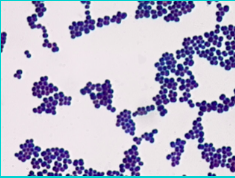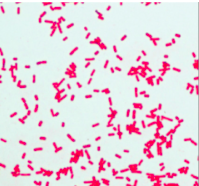What’s a Gram Stain?
One of the first things you learn about in biology classes is something called a Gram stain. You have probably heard of it, and most likely knew what it was at some point in your life, but have long since forgotten.
A gram stain is a test to determine whether a bacterium or particular fungi has a thick layer of something called peptidoglycan (a structural agent) in its cell wall. Those bacteria or fungi who have this thick layer of peptidoglycan in their cell walls hold on to a violet colored dye used in the Gram stain test and are therefore called “Gram positive”. Those that do not are called “Gram negative”.
Simple? Actually, yes. When the test is all said and done, Gram positive bacteria and fungi show up under the microscope as dark violet in color, while Gram negative bacteria and fungi take on a pinkish color because they do not hold the dye. It’s not hard to distinguish what type you’re looking at, as long as you are able to tell the difference between pink and purple.
So, after a sample is taken from a bacterial or fungal infected site, it goes to the lab for testing. Determining whether the bacteria is Gram positive or negative is one of the most important first steps in testing because it lets the doctor know what may be an appropriate beginning treatment to start clearing the infection. The cell walls of the bacteria can be targeted by antibiotics if the doctor knows if the bacteria is Gram positive or Gram negative.
When the Gram stain is positive, there will often be a report of what is seen on the slide. The purple color of the Gram stain, the shape and size of the microbe, the presence of blood cells (red and white, white indicating infection), and whether the microbe is found outside (extracellular) or inside of another cell (intracellular).
Along with the Gram stain, the bacteria most likely will be cultured. Culturing involves letting the microbe expand in number under closely-monitored growing conditions (often similar conditions to the inside of the human body). This may help further determine which microbe is causing the infection and give the doctor a better idea of the best course of treatment to clear the infection.
Sometimes after further testing the doctor may prescribe another antibiotic or fungicide (in the case of a fungal infection) that will work better on the particular microbe identified.
Thanks to Mr. Hans Christian Gram for inventing the Gram test, lab technicians and doctors are able to quickly get you the correct medications you need to clear some of the nastiest of infections!
Here are some examples of microbes in culture:


One thought on “What’s a Gram Stain?”
Comments are closed.



Keep on working, great job!